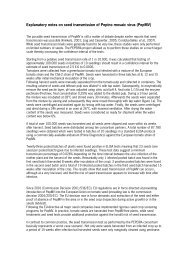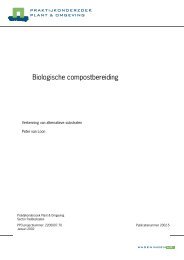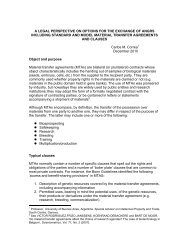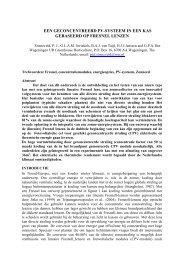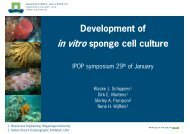Oil spill dispersant article
Oil spill dispersant article
Oil spill dispersant article
Create successful ePaper yourself
Turn your PDF publications into a flip-book with our unique Google optimized e-Paper software.
tests quite often conclude that dispersing oil<br />
makes it more capable of causing toxic effects<br />
because the oil (and the partially water-soluble<br />
chemical compounds from the oil) become<br />
much more available to the test organisms.<br />
The potential for causing toxic effects to<br />
marine life is greater if <strong>dispersant</strong>s are used,<br />
than if they are not. However, the dispersed oil<br />
concentrations needed to cause effects in the<br />
tests, and the time of exposure required to<br />
cause these effects, are normally much higher<br />
and more prolonged than occurs at sea when<br />
<strong>dispersant</strong>s are used.<br />
Even within a standardised toxicity test methodology<br />
there are many variables:<br />
Test organism<br />
The oil concentration and period of exposure<br />
required to cause effects depends on the test<br />
organism used. Amphipods (very small shrimplike<br />
creatures) are particularly sensitive to dispersed<br />
oil. Other marine creatures are much<br />
less sensitive.<br />
Observed effect<br />
Sub-lethal effects, rather than lethality, have<br />
often been used as toxic effect indicators.<br />
Even lower degrees of exposure will cause<br />
no observable effects and the NOEC (No<br />
Observable Effects Concentration) can be<br />
determined for a particular period of exposure.<br />
Interpreting toxicity data can be diffi cult. The<br />
results cannot be directly ‘translated’ into<br />
effects that could be caused at sea without<br />
taking into account the exposure levels that<br />
will occur at sea.<br />
Realistic exposure levels<br />
Experience from both experimental fi eld trials<br />
and <strong>dispersant</strong> operations at real <strong>spill</strong>s have<br />
shown that dispersed oil will quickly be<br />
diluted into the sea. The oil in water con<br />
centration rapidly drops from a maximum of<br />
30-50 ppm just below the <strong>spill</strong> short time<br />
after treatment, to concentrations of



